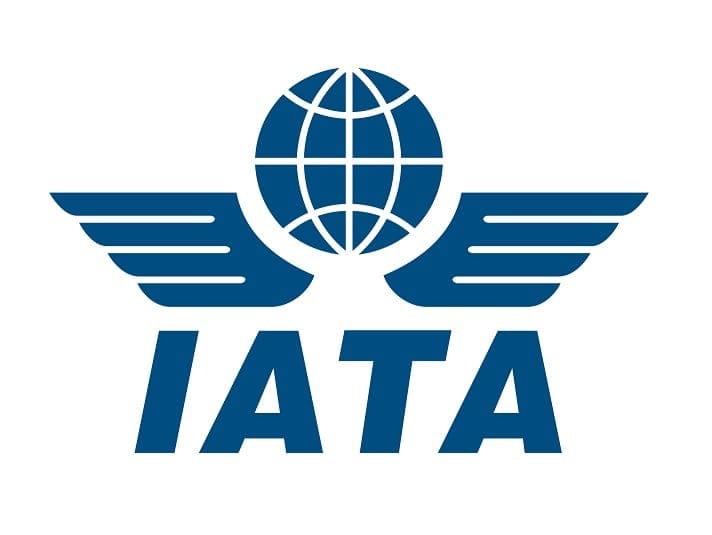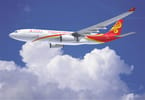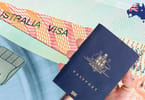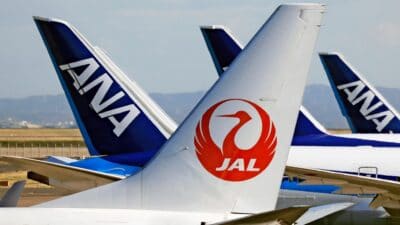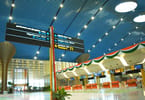Worldwide annual air passenger numbers exceeded four billion for the first time, supported by a broad-based improvement in global economic conditions and lower average airfares. The International Air Transport Association (IATA) announced industry performance statistics for 2017.
At the same time, airlines connected a record number of cities worldwide, providing regular services to over 20,000 city pairs* in 2017, more than double the level of 1995. Such increases in direct services improve the industry’s efficiency by cutting costs and saving time for both travelers and shippers alike.
This information is included in the recently released 62nd Edition of the World Air Transport Statistics (WATS), the yearbook of the airline industry’s performance.
“In 2000, the average citizen flew just once every 43 months. In 2017, the figure was once every 22 months. Flying has never been more accessible. And this is liberating people to explore more of our planet for work, leisure and education. Aviation is the business of freedom,” said Alexandre de Juniac, IATA’s Director General and CEO.
Punti ewlenin tal-prestazzjoni tal-industrija tal-linji tal-ajru 2017:
Passiġġier
- Madwar is-sistema kollha, il-linji tal-ajru ġarru 4.1 biljun passiġġier fuq servizzi skedati, żieda ta ’7.3% fuq l-2016, li jirrappreżentaw 280 miljun vjaġġ addizzjonali bl-ajru.
- Airlines in the Asia-Pacific region once again carried the largest number of passengers. The regional rankings (based on total passengers carried on scheduled services by airlines registered in that region) are:
1. Ażja-Paċifiku Sehem tas-suq ta ’36.3% (1.5 biljun passiġġier, żieda ta’ 10.6% meta mqabbel mal-passiġġieri tar-reġjun fl-2016)
2. Ewropa Sehem tas-suq ta '26.3% (1.1 biljun passiġġier, żieda ta' 8.2% fuq l-2016)
3. Amerika 23% market share (941.8 million, up 3.2% over 2016)
4. Amerika Latina 7% market share (286.1 million, up 4.1% over 2016)
5. Lvant Nofsani 5.3% market share (216.1 million, an increase of 4.6% over 2016)
6. Afrika 2.2% market share (88.5 million, up 6.6% over 2016). - il l-aqwa ħames linji tal-ajru ikklassifikati skont il-kilometri totali skedati tal-passiġġieri ttellgħu, kienu:
1. American Airlines (324 million)
2. Delta Air Lines (316.3 million)
3. United Airlines (311 million)
4. Emirates Airline (289 million)
5. Southwest Airlines (207.7 million) - L-ewwel ħames pari ta 'ajruport ta' passiġġieri internazzjonali / reġjonali were all within the Asia-Pacific region, again this year:
1. Hong Kong-Taipei Taoyuan (5.4 million, up 1.8% from 2016)
2. Jakarta Soekarno-Hatta-Singapore (3.3 million, up 0.8% from 2016)
3. Bangkok Suvarnabhumi-Hong Kong (3.1 million, increase of 3.5% from 2016)
4. Kuala Lumpur–Singapore (2.8 million, down. 0.3% from 2016)
5. Hong Kong-Seoul Incheon (2.7 million, down 2.2% from 2016) - L-ewwel ħames domestic passenger airport-pairs were also all in the Asia-Pacific region:
1. Jeju-Seoul Gimpo (13.5 million, up 14.8% over 2016)
2. Melbourne Tullamarine-Sydney (7.8 million, up 0.4% from 2016)
3. Fukuoka-Tokyo Haneda (7.6 million, an increase of 6.1% from 2016)
4. Sapporo-Tokyo Haneda (7.4 million, up 4.6% from 2016)
5. Beijing Capital-Shanghai Hongqiao (6.4 million, up 1.9% from 2016) - One of the interesting recent additions to the WATS report is the ranking of passenger traffic by nazzjonalità , for international and domestic travel. (Nationality refers to the passenger’s citizenship as opposed to the country of residence.)
1. United States of America (632 million, representing 18.6% of all passengers)
2. People’s Republic of China (555 million or 16.3% of all passengers)
3. India (161.5 million or 4.7% of all passengers)
4. United Kingdom (147 million or 4.3% of all passengers)
5. Germany (114.4 million or 3.4% of all passengers)
merkanzija
- Globally, cargo markets showed a 9.9% expansion in freight and mail tonne kilometers (FTKs). This outstripped a capacity increase of 5.3% increasing freight load factor by 2.1%.
- The top five airlines ranked by scheduled freight tonne kilometers flown were:
1. Federal Express (16.9 billion)
2. Emirates (12.7 billion)
3. United Parcel Service (11.9 billion)
4. Qatar Airways (11 billion)
5. Cathay Pacific Airways (10.8 billion)
Alleanzi tal-Linji tal-Ajru
- Star Alliance żammet il-pożizzjoni tagħha bħala l-akbar alleanza tal-linji tal-ajru fl-2016 b'39% tat-traffiku skedat totali (f'RPKs), segwit minn SkyTeam (33%) u oneworld (28%).
X'GĦANDEK NEĦĦED MINN DAN L-ARTIKOLU:
- At the same time, airlines connected a record number of cities worldwide, providing regular services to over 20,000 city pairs* in 2017, more than double the level of 1995.
- The regional rankings (based on total passengers carried on scheduled services by airlines registered in that region) are.
- This information is included in the recently released 62nd Edition of the World Air Transport Statistics (WATS), the yearbook of the airline industry's performance.

